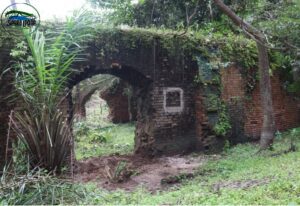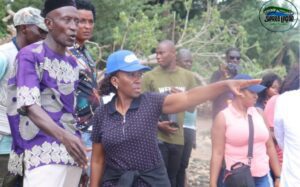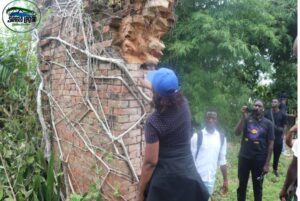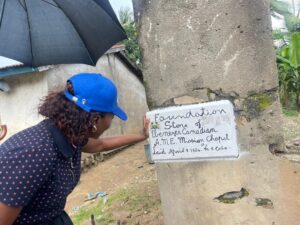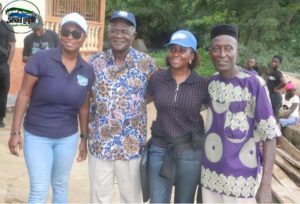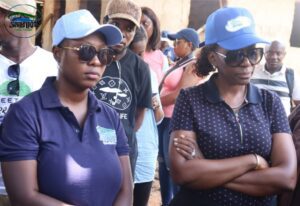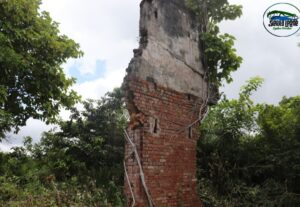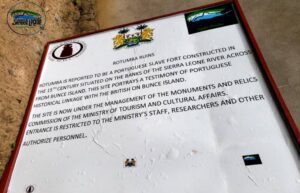The Minister of Tourism and Cultural Affairs, Nabeela Tunis have headed a delegation including the Deputy Minister, Kadijatu Grace Kamara, the cultural directorate of the Ministry, the Monument and Relics Commission and Tour Operators to Rotumba village, Koya Chiefdom where they ascertained and spot-checked the Portuguese Slave Fort and also erected a plaque to preserve the monumental relics.
Rotumba is reported to be a Portuguese Slave Fort constructed in the 15th Century situated on the banks of Sierra Leone River across Bunce Island. The site portrays a testimony of Portuguese historical linkage with the British on Bunce Island.
Before conducting a tour of the relics, the Minister and team did the required courtesies and pleasantries to the Chief of Rotumba village, Pa. Alimamy Brima ll who on behalf of the Paramount Chief welcomed the delegation and also expressed delight at the coming of the Ministry with developmental initiative to their village. He committed his and the chiefdom’s support in ensuring that the historical relics is preserved which will in turn bring benefits to them.
In her remarks to the Chief and stakeholders of Rotumba, Madam Nabeela Tunis thanked the people of Rotumba for their warm welcome. She said the purpose of their visit was to ascertain the Portuguese Slave Fort, tag it, find ways to preserve it and sensitize the community about the importance of what they have and the need to protect it. She emphasized that the essence of the erection of a plaque was to indicate that the relics has been identified and will be preserved by the Ministry of Tourism and Cultural Affairs. She commended them for keeping the relics saying that it will have huge economic impact on the lives and livelihood of the village when the project to preserve the fort materialises. She explained that the project is not aimed at depriving the people of their land but to benefit them through the opening of the village to tourists and also the development of the community with necessary amenities.
During the conducted tour of the edifice, the Director of Culture, Foday Jalloh explained the significance and historical importance of the Portuguese Slave Fort and the first Episcopal Church built in 1926 to the Minister. He puts that the fort is ideal for colonial and slave tourism while suggesting the establishment of eco-lodges and a link for heritage tourism between Bunce Island and the related rivers in the estuary.
Interaction with jubilant stakeholders and the community people by the Minister and team climaxed the visit.
MTCA Communications
Info@tourism.gov.sl.
